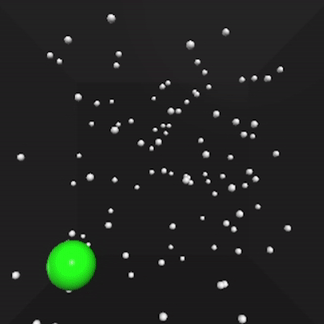Defying gravity: A new spin on intro physics for life sciences
A new curriculum developed and tested at MSU puts the focus on the physics that life scientists need
The basic physics that a budding biologist needs to know is different from what’s useful to an astronomy student, so a new Michigan State University introductory physics curriculum is specifically tailored for life sciences majors.
MSU Professor Lisa Lapidus has been developing and piloting a new yearlong curriculum that bucks traditional physics pedagogy. Instead of following convention, the new program provides students who are pursuing careers in the life sciences — about half of the students who take introductory physics — with physics content tailored to their needs.

“It was pretty obvious to me that the current choices about what’s being taught in physics don’t reflect the reality of the biology that students in the life sciences are studying,” said Lapidus, a professor in the Departments of Physics and Astronomy as well as Biochemistry and Molecular Biology. “We need to teach them what would actually be useful to them.”
Lapidus detailed the curriculum and results from MSU’s four-year pilot program in the journal The Biophysicist, published online Nov. 24. About 1,000 undergraduates participated in the successful pilot program that began in 2016 and will be scaled up to accommodate at least that number of life science students every semester by 2022.
For the last several decades, conventional intro physics courses haven’t generally differentiated between majors. Students would learn the same material whether they wanted to be astronomers or anesthesiologists: the properties of gravity, the path a baseball takes absent air resistance, or how much energy is stored in a spinning flywheel.
“The more I taught intro physics courses, the more I realized that none of this was ever going to be used,” Lapidus said. “Is it important that a biochemist understands how a flywheel works?”
Lapidus’s courses, dubbed Physics at the Molecular and Cellular Level, shed many time-honored but ultimately less serviceable concepts in favor of more relevant topics.

For example, students aren’t expected to grapple with how gravity governs the planets’ orbits or to fixate on frictionless baseballs soaring without air resistance. Lessons such as these are simplified — if not omitted — to focus on understanding the complex motion of cells and biomolecules as they collide and schlep through viscous water.
“It turns things on their head a little bit, but I like it,” said Larry Browning, a physics professor at South Dakota State University who is implementing the curriculum there.
“A lot of the physics classes we offer are very general information. They’re not specific enough for what life science students need,” he said. “In the previous way, biology-focused students were almost on their own to find applications for the physics. Now we give them tools to help them along this journey.”
Lapidus is a veteran teacher of introductory physics, which has helped her identify areas where the curriculum could be updated. She also brings her personal perspective as a classically trained physicist who has been tackling biological problems with her research.
“My physics background explained a lot of what I needed to know, it just wasn’t in the right context,” she said.
She credits a former adviser with helping provide that context. Now, she’s paying that forward with the support of her departments and colleagues, especially Matthew Comstock, an associate professor in the MSU Department of Physics and Astronomy.
She also didn’t have to start from scratch. Over the past several years, instructors at other universities have been innovating approaches and resources to help intro physics resonate more with life science students. Lapidus has incorporated and built on those to develop a complete curriculum.
The pandemic has altered the immediate plans for this curriculum, but Lapidus has been able to adapt it for remote learning while keeping students engaged. And she’s still working to optimize this class for the future, when classes can safely resume in person and when both faculty and students will be working in MSU’s state-of-the-art STEM Teaching and Learning Facility. STEM stands for science, technology, engineering and math.
“We have online options,” Lapidus said. “But the student who’s reading this in January ought to know we are planning to teach in the new STEM building.”
